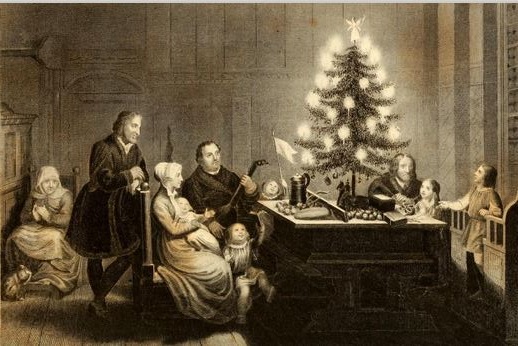
Word of the Day: Luminary
Today’s word of the day is luminary. Luminary can be either a noun or an adjective. As a noun, it actually has three meanings: 1. “a celestial body, as the sun or moon”; 2. “a body, object, etc., that gives light”; and 3. “a person who has attained eminence in his or her field or is an inspiration to others” (https://www.dictionary.com/browse/luminary?s=t). The adjective means “of, relating to, or characterized by light.”
According to www.etymonline.com, the word entered the language in the “mid-15c., ‘lamp, light-giver, source of light,’ from Old French luminarie (12c.), ‘lamp, lights, lighting; candles; brightness, illumination,’ from Late Latin luminare ‘light, torch, lamp, heavenly body,’ literally ‘that which gives light,’ from Latin lumen (genitive luminis) ‘light, source of light, daylight, the light of the eye; distinguished person, ornament, glory,’ related to lucere ‘to shine,’ from suffixed (iterative) form of PIE root *leuk- ‘light, brightness.’
“From late 15c. as ‘celestial body.’ Sense of ‘notable person’ is first recorded 1690s, though the Middle English word also had a figurative sense of ‘source of spiritual light, example of holiness’ (mid-15c.). As an adjective, ‘pertaining to light,’ from 1794 but this is rare.”
The Christmas tradition that I remember from my growing up years was quite different from what most people seem to do today. Rather than decorating the entire house, including setting up the Christmas tree, right after Thanksgiving, the only decoration we had was Advent candles in the window (they were electric candles). A few days before Christmas, my dad would go out and buy a tree. This was always a bit of an adventure because most of the good trees were sold by December 22. He got the tree so early because he believed that the limbs of the tree took a couple of days to settle back down into place after they had been bound up by the tree sellers.
The tree stood undecorated until Christmas Eve. On Christmas Eve, we went to the 7 p.m. service, which my dad celebrated. Then we trooped home and pretty much went straight to bed. While we kids slept, my parents decorated the tree as well as putting together those Santa gifts. The older of my two brothers, Bill, was usually the first one up, and usually very early, but we had to stay at the top of the stairs until our parents gave us permission to go down. We went down the stairs and turned right into the living room (a very large room in the parsonage in which I grew up). It wasn’t until then that we first saw the decorated tree, along with the presents.
The story of the first Christmas tree was something else I grew up with, probably, at least in part, because my dad was a Lutheran pastor. There are versions of the story, but here’s my attempt at cleaning it up. After the Reformation had started and Luther had separated from the Roman Catholic Church, he married Katherine von Bora and had 6 children, one of whom died very young. So with a big family, and a big house (a former monastery that was given to him by John the Steadfast, an elector).
He was walking home one Christmas Eve, probably returning from a Christmas Eve service (that’s my invention), when he noticed how beautiful the stars and moon were, shining in the black sky. He also noticed how the moonlight glimmered off the pine trees. The tradition of decorated trees around Christmas had been around for at least a couple of decades, maybe longer, but those trees were in the middle of town squares. Luther decided that the tree needed to be cut down and placed inside the home so that God’s light would enrich the Christmas celebration. So he cut down a small pine and took it home.
After carefully explaining to his wife that he would be responsible for cleaning up all the pine needles, he constructed a stand out of wood and placed the tree on it. Then he gathered some candles together, carefully attached them to the tree with twine, and lit the candles. Although scared to death by candles sitting loosely on the arms of a tree in the middle of their home, the Luther family loved the look, and a great tradition was born.
Whether moonlight, sunlight, candlelight, or electric light, we humans love light. In the 16th century, light inside at night was, I imagine, even more precious because it was harder to come by. Candles were relatively expensive, at least compared the cost of light today. Luther’s use of candles to decorate for the coming celebration of the birth of Christ was probably extravagant, but he probably felt it was worth it. After all, there is no luminary in history greater than the Savior, Jesus Christ.
“This painting, depicting what oral tradition indicated happened in 1536, was engraved in a gift book titled Wheat Sheaf from 1853 that was published in Philadelphia. It also said that Luther was the first to light a tree with candles in order to illustrate the “light of God” to his children” (http://www.logosapologia.org/christmas-trees-are-not-pagan/comment-page-1/#_edn2